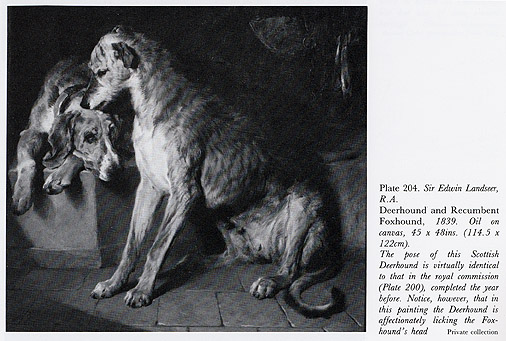
QUEEN VICTORIA AND SIR EDWIN LANDSEER
from Dog Painting, 1840-1940, A Social History of the Dog in Art
by William Secord
|
After working under B.R. Haydon, who encouraged him to study anatomy, in 1816
Landseer was formally admitted to the Royal Academy schools, where he stayed
for about three years. By 1817, at the age of fourteen, he was a regular exhibitor
at the Royal Academy's annual exhibitions as well as at the Society of Painters
in Oil and Watercolor. At the precociously young age of twenty-four he was elected
as an Associate of The Royal Academy. In 1831 he was elected to full membership. |
| First | Previous | Next | Last |
Home | About
the WS Gallery | Current
Exhibition | New
Additions | Search Our Inventory
| Commissioning Paintings | 19th
& 20th Century Oils | Contemporary
Artists | Works
on Paper & Collectibles | Books
| Christine Merrill
| Guest book | Email
Us
All images, designs and information on this site
are fully copyrighted © 1999
and may not be reproduced of used in any form or any manner, or displayed in
any way
on any website without the express written consent of The William Secord Gallery,
Inc.
William Secord Gallery, Inc.
29 West 15th Street 4th floor
New York, NY 10011
Between Fifth and Six Avenues
www.dogpainting.com
wsecord@dogpainting.com
Tel. 212-249-0075
212-249-0896
By appointment
